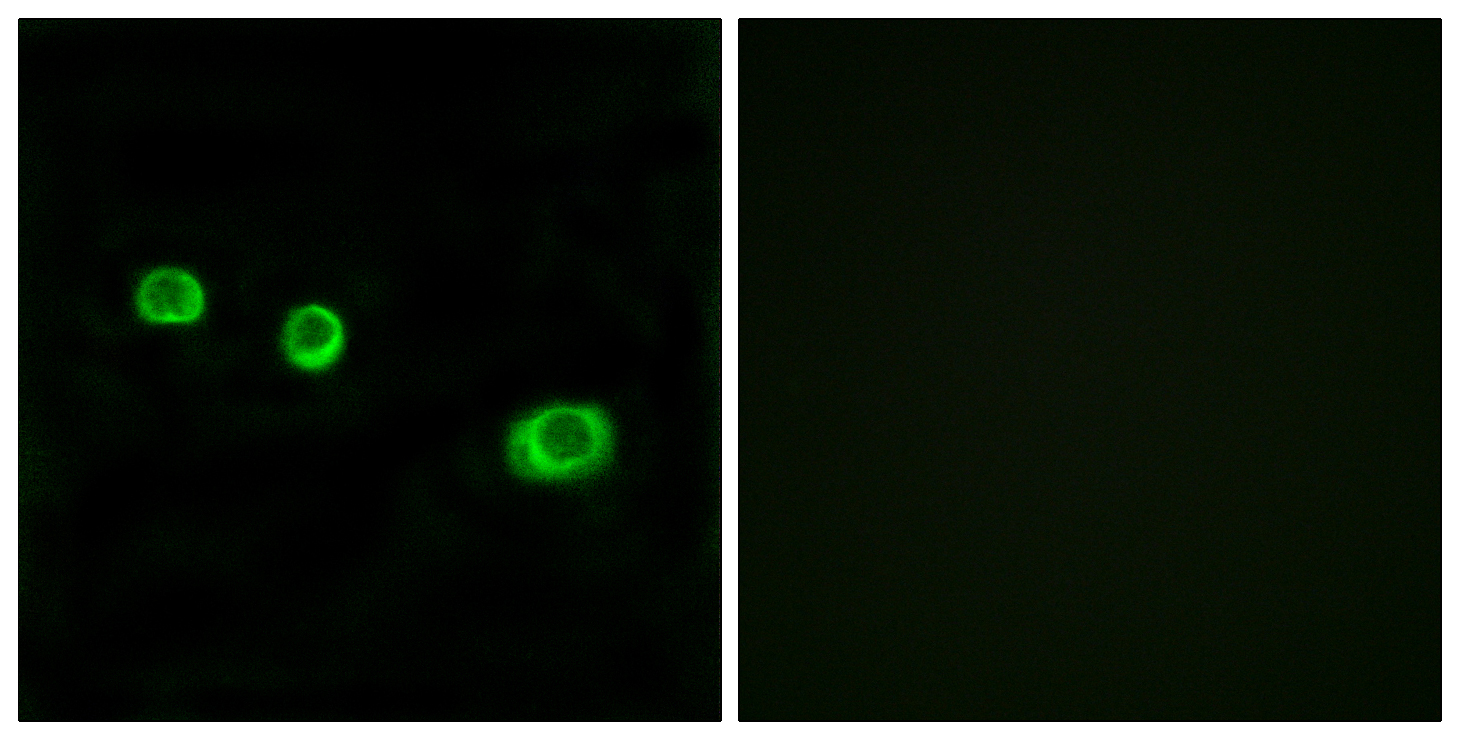GBP1 Polyclonal Antibody
- Catalog No.:YT1867
- Applications:WB;IF;ELISA
- Reactivity:Human;Mouse
- Target:
- GBP1
- Fields:
- >>NOD-like receptor signaling pathway
- Gene Name:
- GBP1
- Protein Name:
- Interferon-induced guanylate-binding protein 1
- Human Gene Id:
- 2633
- Human Swiss Prot No:
- P32455
- Mouse Swiss Prot No:
- Q01514
- Immunogen:
- The antiserum was produced against synthesized peptide derived from human GBP1. AA range:71-120
- Specificity:
- GBP1 Polyclonal Antibody detects endogenous levels of GBP1 protein.
- Formulation:
- Liquid in PBS containing 50% glycerol, 0.5% BSA and 0.02% sodium azide.
- Source:
- Polyclonal, Rabbit,IgG
- Dilution:
- WB 1:500 - 1:2000. IF 1:200 - 1:1000. ELISA: 1:40000. Not yet tested in other applications.
- Purification:
- The antibody was affinity-purified from rabbit antiserum by affinity-chromatography using epitope-specific immunogen.
- Concentration:
- 1 mg/ml
- Storage Stability:
- -15°C to -25°C/1 year(Do not lower than -25°C)
- Other Name:
- GBP1;Interferon-induced guanylate-binding protein 1;GTP-binding protein 1;GBP-1;HuGBP-1;Guanine nucleotide-binding protein 1
- Observed Band(KD):
- 68kD
- Background:
- Guanylate binding protein expression is induced by interferon. Guanylate binding proteins are characterized by their ability to specifically bind guanine nucleotides (GMP, GDP, and GTP) and are distinguished from the GTP-binding proteins by the presence of 2 binding motifs rather than 3. [provided by RefSeq, Jul 2008],
- Function:
- function:Binds GTP, GDP and GMP.,induction:By interferon gamma during macrophage activation.,similarity:Belongs to the GBP family.,
- Subcellular Location:
- Cytoplasm . Golgi apparatus membrane; Lipid-anchor ; Cytoplasmic side. Cell membrane . Secreted . Cytoplasmic vesicle . Secreted from endothelial cells in the cerebrospinal fluid, upon bacterial challenge and independently of IFNG induction. Golgi membrane localization requires isoprenylation and the presence of another IFNG-induced factor.
- Expression:
- Placenta,Spleen,Uterus,
- June 19-2018
- WESTERN IMMUNOBLOTTING PROTOCOL
- June 19-2018
- IMMUNOHISTOCHEMISTRY-PARAFFIN PROTOCOL
- June 19-2018
- IMMUNOFLUORESCENCE PROTOCOL
- September 08-2020
- FLOW-CYTOMEYRT-PROTOCOL
- May 20-2022
- Cell-Based ELISA│解您多样本WB检测之困扰
- July 13-2018
- CELL-BASED-ELISA-PROTOCOL-FOR-ACETYL-PROTEIN
- July 13-2018
- CELL-BASED-ELISA-PROTOCOL-FOR-PHOSPHO-PROTEIN
- July 13-2018
- Antibody-FAQs
- Products Images

- Immunofluorescence analysis of MCF7 cells, using GBP1 Antibody. The picture on the right is blocked with the synthesized peptide.

- Western blot analysis of lysates from HUVEC cells, using GBP1 Antibody. The lane on the right is blocked with the synthesized peptide.



